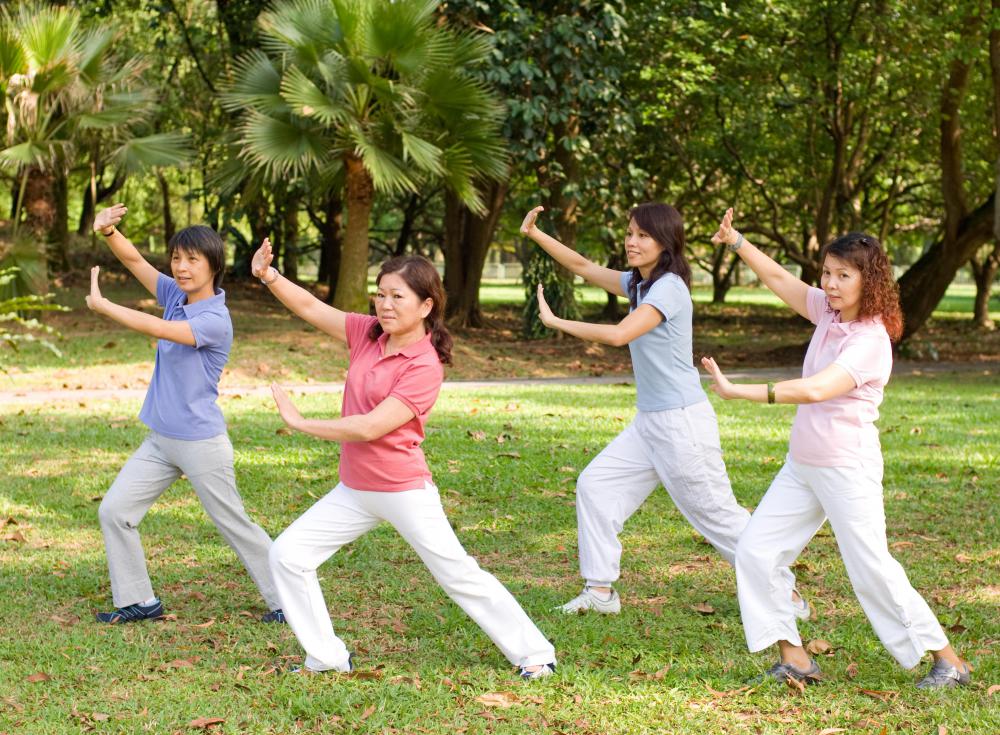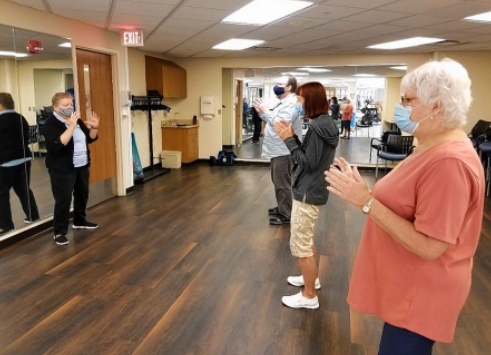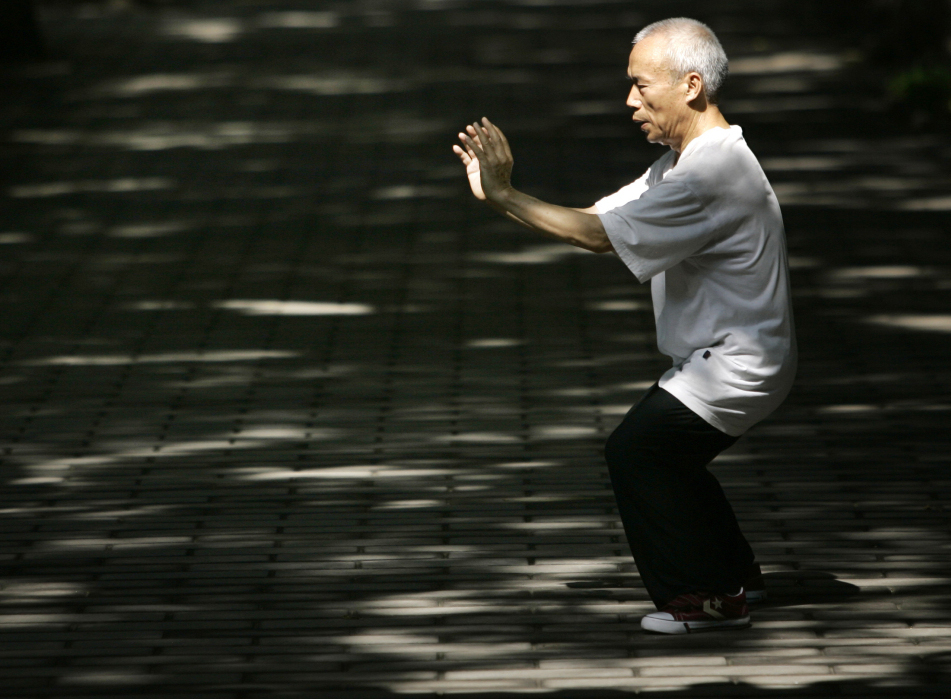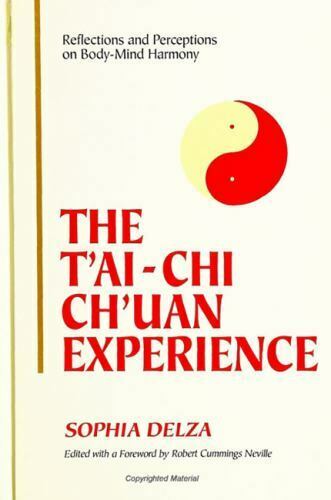By Ansley Holder
Studying spirituality this semester and focusing on the connection of the mind, body, and spirit, I was surprised at the impact made by the few minutes of Tai Chi movements each week during class. It seemed that I was not the only one with this experience, from comments from my classmates.
While shopping for a handmade birthday gift for a colleague at the Monroe-Walton Center for the Arts in March, I heard about a Tai Chi class in my town. I was surprised to see a flyer placed at the cash register promoting the Center’s weekly Friday morning Tai Chi class taught by local, certified instructor Tracey Temple. I went online that night and registered for the next available class. How would I react to an hour-long session of mind/body exercises rather than the brief experiences in class? What is the principle behind the movements, and how do they elicit these feelings? I hoped I was about to learn the answers to these questions.

When someone says Tai Chi class or group practice, the image that likely comes to mind is a decent-sized group of people in the green grass of a park and likely somewhere in Asia.
My experience didn’t mimic the Tai Chi stock image photo–we were a small group of five white females inside a former school building in the downtown business district of a small town in the Southeastern United States. Within just a few minutes of arriving, I was speaking to a classmate in a wheelchair who asked if I had experience with Tai Chi. After I replied, I asked her if she enjoyed it; I didn’t even finish my sentence before she enthusiastically added, “I love it! I mean, I thought it might just be okay…but I loved it!”
The instructor turned around to face the class wearing her blue t-shirt emblazoned with, “Life happens, Tai Chi helps,” and requested our attention to get us started with our Tai Chi walking–to get our mindset going.

Putting heels out first, empty stepping, transferring weight, maintaining an upright posture, and then repeating this process with the other foot began our continuous and intentional movements in this space for an hour. “Walking is just controlled falling,” Tracey said. I was struck by the accuracy of that description and how our fast-paced lifestyle even extends to the simple act of walking from room to room in our home.
After a few minutes of Tai Chi walking, we proceeded to the standing microcosmic orbit rocking movement. Tracey explained that in Tai Chi, one places the tongue on the roof of the mouth to close the channel and make a connection so that the flow of energy is constant.

My mind was always working; I was thinking of my next movement as they all began to combine into a graceful, rhythmic, dance. The continuous flow principle of Tai Chi applies to the movements and then extends to the energy cultivated by those movements that flow through me.
We practiced the imaginary ball movements next and talked about how being stiff in your body, even in your fingers, blocks the energy from flowing during practice. The goal is a smooth flow of movement against a gentle resistance. Chi is energy and life force Tracey said, “every living thing has a type of energy in them. The idea of Tai Chi is trying to cultivate or build that energy inside you.” Taking the energy created and giving it back to yourself through the high energy points is a benefit of Tai Chi.
The last movements our group practiced together were what she called the “basic 6” open/close movement series (commencement, single whip right, wave hands right, open/close, single whip left, wave hands left). During this series I felt a tingling, warm sensation in the Lao Gong acupressure points on my palm. I was really surprised and had to keep from staring at my palms in wonder–what is happening? I cultivated energy through movements and exercise, and I can use that energy for good.

When talking about the health and overall benefits of Tai Chi, Tracey mentioned, “Form is a vehicle to get to the principles. Principles are something we should be incorporating into our everyday life.”
These are powerful ideas, and I believe her t-shirt motto is spot-on. Practicing Tai Chi helps your health, body, balance, focus, energy level, mindset, and more. Peter Wayne writes in the 2019 book Harvard Medical School Special Health Reports: An Introduction to Tai Chi, “Tai Chi’s philosophy can affect your behavior in a good way. You learn to ‘go with the flow,’ a tenet of Taoism. This adaptability or resilience enables you to better manage stress and bounce back from adversity or trauma. It’s like an emotional form of self-defense.”
After taking this hour-long class, I was able to better understand why the movements are indeed a spiritual practice. The flowing energy is spiritual to me; the constant movement connects my mind to my body and creates energy. Sophia Delza writes in The T’ai-Chi Ch’uan Experience: Reflections and Perceptions on Body-Mind Harmony:

“The simultaneity of moving and spirit is so uniquely achieved in this exercise-art that we need hardly ask whether it is the spirit that moves or whether it is the movement which gives rise to the spirit. One blended with the other, with cause an effect and effect a cause [sic], creates a wholeness which contains the spirit of the moving” (35).
It’s a simple but centuries-proven practice that creates good energy which is then put into the world. We could all use a little more good in this world, don’t you think? Because life happens, but Tai Chi helps.
